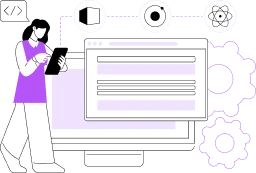- Major Components of Lab Information Management Software
- Sample Tracking
- Test Management
- Data Management
- Workflow and Process Management
- Inventory Management
- Quality Control
- User and Security Management
- How Does a Lab Information Management Software Work?
- Register
- Prepare
- Allocate
- Validate
- Approve and Retest
- Report
- Archive
- Major Benefits of Adopting a Healthcare Laboratory Information Management System
- Enhanced Accuracy and Efficiency
- Larger Integration Support
- Streamlined Workflow
- Improved Compliance with Regulations
- Enhanced Decision-Making
- Reduced Operational Costs
- Scalability for Future Growth
- Features of a Dedicated LIMS Software
- A Step-by-Step Healthcare LIMS Software Development Process
- Define Your IT System
- Find a Development Partner
- Set the Design Layout
- Test Your Software
- Prepare for Launch
- How Much Does It Cost to Build an LIMS Software?
- 1. Data Organization
- 2. Process Automation
- 3. Digital Transformation
- Challenges of Adopting LIMS Platform and Solutions to Overcome Them
- User Resistance
- Customization and Integration Challenges
- High Initial Costs
- Data Migration Issues
- Latest Trends in Custom LIMS Software Development for the Healthcare Industry
- Cloud-Based Solutions
- Integration with Genomics and Precision Medicine
- Use of Artificial Intelligence and Machine Learning
- Mobile Accessibility
- Compliance and Regulatory Features
- Interoperability with Other Healthcare Systems
- Automation of Routine Tasks
- Advanced Analytics and Reporting
- How Can Appinventiv Help in Building a Robust LIMS for Your Business?
- FAQs
Laboratory Information Management Systems (LIMS) is a solution used in laboratories to automate recurring tasks, and manage lab samples and related data. An LIMS system assesses every step of the process, from the moment the samples arrive to data recording, storing, reporting, and archiving.
Due to its efficiency, LIMS software development enters many sectors and industries, including public health, bioinformatics, chemical manufacturing, geoinformatics, etc. The extensive use of the software in various industries is also evident by the fact that the global LIMS market is projected to reach a value of $3.8 billion by 2029, growing at a CAGR of 12.9% from 2024 to 2029.,as per a report by MarketsandMarkets.
Now, while the LIMS software holds value in varied industries, the one industry for which it holds utmost importance and maximum value is healthcare.
In the healthcare sector, the demands on laboratory efficiency and data accuracy are particularly high, making LIMS an indispensable tool. By automating laboratory workflows, LIMS ensures that data is not only collected more swiftly but also with greater precision, reducing the likelihood of human error and enhancing the overall quality of care.
This increased efficiency also means that laboratories can process more samples at a faster rate, leading to quicker decision-making in critical health interventions. Moreover, LIMS facilitates regulatory compliance through robust documentation and audit trails, which are essential in healthcare where adherence to strict standards is mandatory.
Bring your curiosity to this article as we delve into the essentials of healthcare LIMS software development, explaining the reasons behind its necessity and the methods of its implementation. But first, let’s examine some relevant business benefits of LIMS.
Major Components of Lab Information Management Software
Let’s delve into the major components that make up a Laboratory Information Management System (LIMS), which is crucial for enhancing the efficiency and reliability of laboratory operations. Understanding these components can provide insights into how LIMS can streamline workflows and improve data handling in any lab setting.
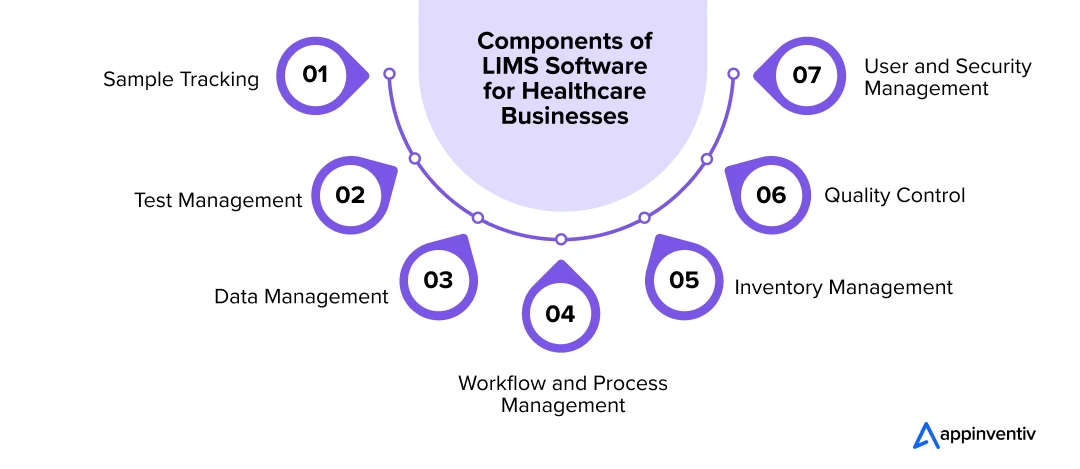
Sample Tracking
Sample tracking is a fundamental component of LIMS. It manages the life cycle of every sample in the laboratory, from logging in new samples to tracking their location and analyzing their status through various tests until their disposal. This system ensures all sample data is linked, traceable, and easily accessible.
Test Management
This component of LIMS oversees the execution and management of tests that are carried out on samples. It includes defining test protocols, scheduling tests, and recording test results. Test management helps in maintaining consistency and accuracy in laboratory testing procedures.
Data Management
A robust data management system is essential for any LIMS. It securely stores all laboratory data, including sample data, test results, and quality control results. This system ensures data integrity and compliance with standards while providing features for data analysis and report generation.
Workflow and Process Management
Workflow and process management tools within LIMS guide and automate the laboratory’s workflows and processes. This component is designed to streamline operations, reduce manual errors, and ensure that all procedures follow predefined steps and compliance requirements.
Inventory Management
Inventory management in LIMS tracks and manages laboratory supplies and reagents. It includes monitoring stock levels, setting re-order thresholds, and managing vendors. Effective inventory management helps avoid delays and interruptions in laboratory work due to supply shortages.
Quality Control
Quality control is critical for maintaining the accuracy and reliability of laboratory results. This component of LIMS helps manage control samples, calibrations, and inter-laboratory comparisons. It ensures that all laboratory outputs meet set quality standards.
User and Security Management
User and security management is essential for controlling access to sensitive information and functionalities within LIMS. This component manages user roles, permissions, and access rights, ensuring only authorized personnel can access certain data and perform specific functions.
How Does a Lab Information Management Software Work?
If you build a custom LIMS software, you must know how it functions for a user. Every LIMS software, regardless of which industry it is used in, provides some common steps that need to be followed. Here is an overview of how LIMS work:
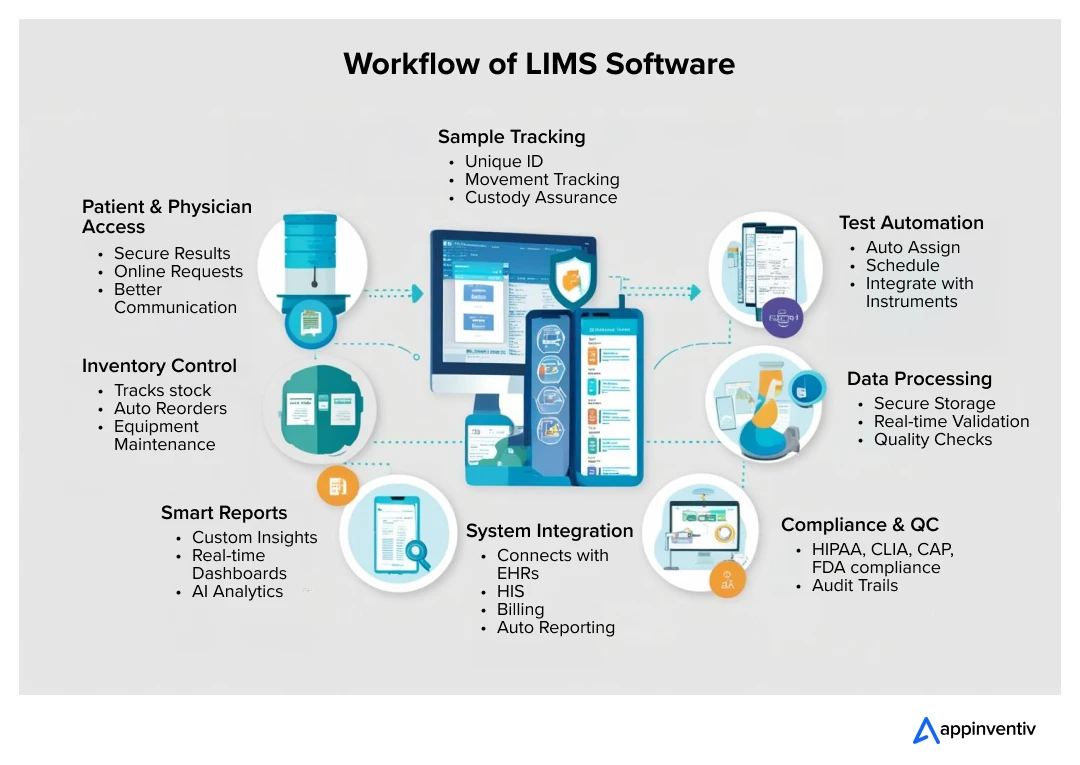
Register
Whoever is using the LIMS software needs to register first. The purpose could be anything from a drug test, or mineral check, to blood sample testing. But the first step is always to register the subject on the software so that report labeling can start.
Prepare
Once the registration is done, all the internal entries and processes automatically begin. Multiple application functionalities start operating, and raw data gets converted into input data for analysis.
Allocate
At this point, the software will have all the data it needs. The following action is to allocate this data to different instruments and tools to complete the analysis. All these tools will operate independently and simultaneously to increase the reports’ efficiency.
Validate
In case there are dependencies among data given by different tools in the last step, the system can be designed to do so. In the end, the data received from various tools are validated against the sample data.
Approve and Retest
The checked and validated data gets labeled for final approval and then given to the subject as a report. However, if any discrepancy is detected during internal validation, the data will go for a retest. The data will go through the entire analysis again. The loop will continue till it meets the appropriate limit of validation or if it runs out of the number of trials. The validation errors are recorded in error logs.
Report
Once the data is ready, reports are labeled, and sample data is attached, LIMS software generates the templates. The fully prepared report is then printed or shared along with complete data of the previous processes through communication channels.
Archive
Once the software has sent the report to the concerned patient, the job does not end. You also need to track the analysis that has happened in your software. Therefore, the information gets archived in the data center for record-keeping purposes. You can design the software to save this data on a cloud of the institute’s record center.
Major Benefits of Adopting a Healthcare Laboratory Information Management System
LIMS does more than just automate processes in a laboratory. Let us discuss the major benefits of LIMS for your business.
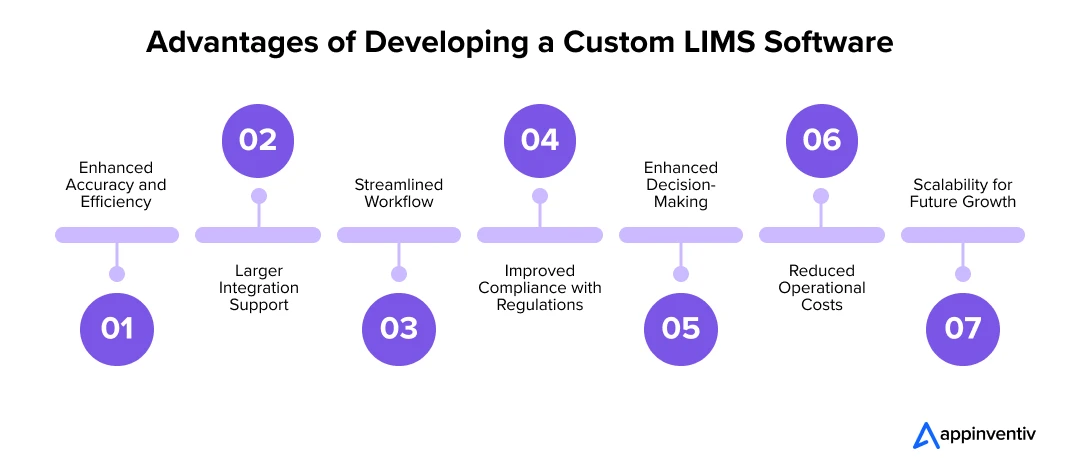
Enhanced Accuracy and Efficiency
One of the major benefits of LIMS is that it completely eliminates the need for paper use in a lab, boosting throughput and guaranteeing the accuracy of data. It also cuts down turnaround times by eliminating manual procedures. An LIMS enables regulatory auditors to swiftly obtain the data and completely eliminates the danger of data loss or fraudulent reporting. An LIMS also forbids the use of out-of-date or miscalibrated equipment for analytical testing, ensuring accuracy of results.
Larger Integration Support
Various laboratory instruments and applications can be connected with effective LIMS programs for controlling certain activities and for ease of data transmission. For the safety and security of the data, the integration can be controlled. To improve resource planning and data management effectiveness, they can also be integrated with accounting software and enterprise resource planning (ERP) programs.
[You might also want to take a look at the different ways an ERP solution helps your healthcare business.]
Streamlined Workflow
When you develop custom LIMS software solutions, it speeds up workflows with completion monitoring. The tasks that the operator gives in the system, the LIMS program keeps track of each one of them. Systems are linked into your lab with the help of lab information, which speeds up internal operations and lowers operational expenses.
Improved Compliance with Regulations
Healthcare LIMS software development ensures that laboratories adhere to industry standards and regulatory requirements, including those mandated by the FDA or HIPAA in healthcare. The system automates the creation of audit trails and quality control documents, making compliance simpler and more transparent. This protects against compliance-related penalties and builds trust with patients and stakeholders.
Enhanced Decision-Making
By centralizing access to all laboratory data, LIMS provides comprehensive analytics and reporting tools that aid in making informed decisions quickly. This data-driven approach allows lab managers and healthcare professionals to detect trends, predict outcomes, and adjust laboratory operations or patient care plans based on real-time data insights.
Reduced Operational Costs
One of the major advantages businesses can incur when they build LIMS software is reduced operational costs. Automating routine laboratory tasks reduces the need for manual intervention, which can significantly lower labor costs and minimize human error. Additionally, LIMS optimizes resource utilization by ensuring that reagents and supplies are used efficiently and preventing unnecessary repeat tests, thus further driving down costs.
Scalability for Future Growth
As healthcare facilities grow, so does the volume of data and complexity of operations. A robust LIMS is scalable and capable of expanding to accommodate increased test volumes or more complex healthcare data analysis without compromising performance. This makes it an ideal solution for labs looking to grow their capabilities over time without constant system upgrades or replacements.
Features of a Dedicated LIMS Software
During Healthcare LIMS software development, you need to consider the specific features and capabilities of LIMS that your business requires. Below listed are a few of them:
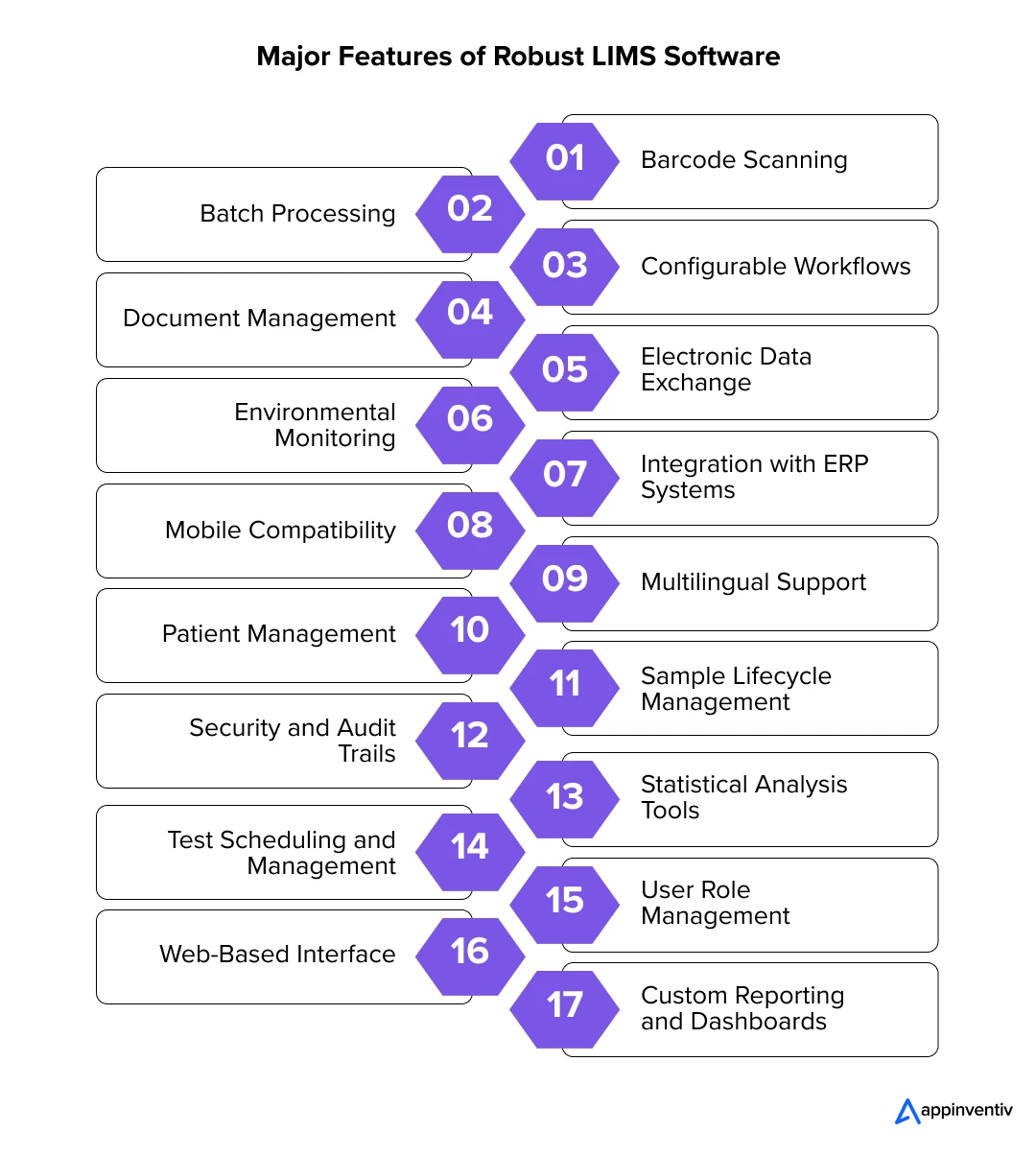
Barcode Scanning
Enables quick and accurate sample identification, reducing errors and speeding up the workflow by automating data entry associated with sample tracking.
Batch Processing
Allows for the handling and processing of multiple samples simultaneously, improving lab efficiency and throughput.
Configurable Workflows
Supports customizable workflows to accommodate specific laboratory processes and requirements, enhancing flexibility and efficiency.
Document Management
Manages all lab documentation in a centralized and searchable repository, such as SOPs, test protocols, and compliance records.
Electronic Data Exchange
Facilitates data transfer between the LIMS and other systems or instruments, ensuring accuracy and reducing manual data entry.
Environmental Monitoring
Tracks environmental conditions, such as temperature and humidity that might affect sample integrity or experimental outcomes.
Integration with ERP Systems
Links the LIMS with enterprise resource planning (ERP) systems for seamless communication and coordination between lab operations and broader business processes.
Mobile Compatibility
Offers a mobile interface to allow remote access to the LIMS, enabling field data collection and real-time access to lab results.
Multilingual Support
Provides interfaces in multiple languages to accommodate diverse user bases, improving usability and accessibility.
Patient Management
Manages patient profiles, including contact information, billing details, and historical data, essential for labs serving medical facilities or offering testing services.
Sample Lifecycle Management
Tracks a sample through its entire lifecycle in the lab, from intake to disposal, ensuring comprehensive traceability and record-keeping.
Security and Audit Trails
Implements robust security measures and maintains detailed audit trails of all system activities to ensure compliance and safeguard sensitive data.
Statistical Analysis Tools
Provides statistical functions to analyze data directly within the LIMS, supporting quality control and experimental analysis.
Test Scheduling and Management
Schedules tests and manages test queues to optimize lab resources and ensure timely processing.
User Role Management
Defines user roles and permissions to control access to sensitive data and critical functionalities, enhancing security and operational control.
Web-Based Interface
Offers a web-based portal for accessing the LIMS, ensuring compatibility across different devices and operating systems without requiring specialized software.
Custom Reporting and Dashboards
Allows users to create custom reports and dashboards to visualize data trends, lab performance, and operational metrics, aiding in strategic decision-making.
A Step-by-Step Healthcare LIMS Software Development Process
To ensure that you can operate a smooth workflow in your laboratory, it is imperative to have a robust Lab Information Management System in place. Let us dive into the details to build a LIMS that offers it all:
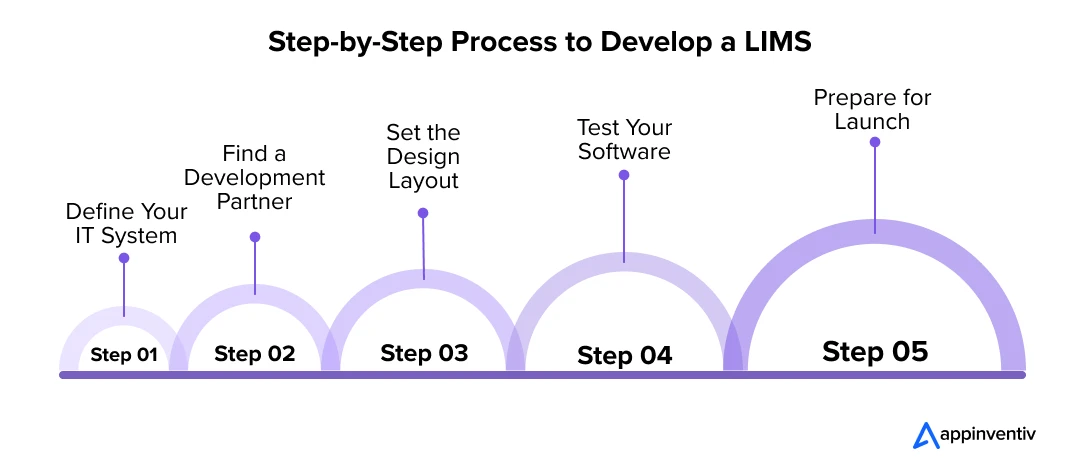
Define Your IT System
The LIMS capabilities and features must correspond to your organization’s needs. While creating a custom solution may be more expensive, it is more suited to the objectives of the laboratory. Essential considerations when developing an IT infrastructure include:
Budget: Create a funding plan for technical support, implementation, and LIMS application development.
Functions: Identify the fundamental competencies needed to carry out laboratory operations.
The number of users: Specify how many staff members will have access to the system.
Sample observation: Depending on the particulars of your industry, select the best custom solution.
When choosing new features, it’s crucial to consider how LIMS will be used. It might be required for unusual laboratory procedures—for instance, integrated tools for the regulation of contractual relationships.
Your IT system should be equipped with technologies such as Java, Python, Ruby, and Kubernetes. Additions of Docker, Mulesoft, MySQL, and MongoDB, with high-performance computing clusters (HPC) and a variety of AWS services, will also help your custom healthcare LIMS software development.
Find a Development Partner
You must outsource an IT team to build a custom LIMS software. They will be able to implement all the requirements given by you to mold the software as per your needs. An LIMS vendor might offer a demo version, implementation and revision price, tool integration, and regular updates for their LIMS software development services.
Listing technical requirements of your project will make it easier for the IT team to get an explicit criteria of LIMS development which will serve as the foundation for checking the final product. The work strategy, the intended uses for LIMS, and the project’s conditions and cost to create LIMS software should all be included in it.
Set the Design Layout
With a little brainstorming and visualization you will understand the design layout you want for your LIMS. At this stage, you want to check the design, talk about the graphical user interface, and decide on additions in the software. Customizing screens, navigating spaces, and simulating the customer journey are all design aspects.
Let your IT Team handle the rest of the design with your support. Their team with experts in software development, project management, graphic designing, and more, will ensure the best solution is delivered. You want to work with the LIMS development team that can build a LIMS with an uncomplicated user interface.
In addition, keep a strong security configuration in your software architecture with no loopholes. You can choose to protect it from public networks by limiting the access of IP addresses.
Test Your Software
Even with careful planning, issues and additional requirements might still occur when you build custom LIMS solutions. Before finally launching the software, you need to test every feature and verify it for accuracy.
The software development company you hire is likely to have a team of Quality Assurance engineers who will take up this task of identifying problems in the system before it can be deployed. They will also check how much the software complies with the legal regulations and industry standards.
Before the LIMS deployment, any issues found must be fixed to reduce inaccuracies.
Prepare for Launch
Following functional testing of the LIMS, it is necessary to train staff members and set up the network and hardware. Dates for the implementation process must be agreed upon by both the customer and staff. It would be best if you first drafted a thorough plan to address the following issues:
- Inactivity in the lab
- The transfer of ongoing activities to the foundation
- Engaging with the system while it is starting up
- Post-deployment support
After looking into the various steps of lab information management systems software development, let us look into the cost to build a LIMS software in pharma or healthcare.
How Much Does It Cost to Build an LIMS Software?
Different LIMS solutions have different ranges of costs. These costs vary according to the type of LIMS you build, your current IT infrastructure, the number of users, and most importantly, your specific goals and requirements.
But we can divide LIMS software into three categories based on its goals:
1. Data Organization
This is the easiest to implement, and its function is to organize the sample inventory of the lab. It provides simple sample traceability permissions. They are the easiest to build too, and hence, are not very costly. The approximate range of implementing this LIMS is $15,000 to $45,000 and can be built over 3 to 6 weeks.
2. Process Automation
This type of LIMS implementation includes every function of the data organization type along with extra configurations for automating manual processes in the workflow. The cost depends on the number of processes you automate, but an estimated range can be between $30,000 to $70,000.
3. Digital Transformation
Digital transformation is a complex type to implement because it incorporates multiple departments with the laboratory. It takes care of all data from the commercial front-end to the laboratory back-end, and some can even look after invoicing if designed to do so. Since the technology to build this type of LIMS is more complex, it needs more time to develop. An approximation can be of 4-9 months for about $60,000 to $200,000.
Challenges of Adopting LIMS Platform and Solutions to Overcome Them
Implementing a Laboratory Information Management System (LIMS) can present several challenges. Addressing these issues effectively requires careful planning, strategic selection, and ongoing support to ensure a successful integration and optimal use of the system. Let’s have a look at some of those challenges and solutions to overcome them.
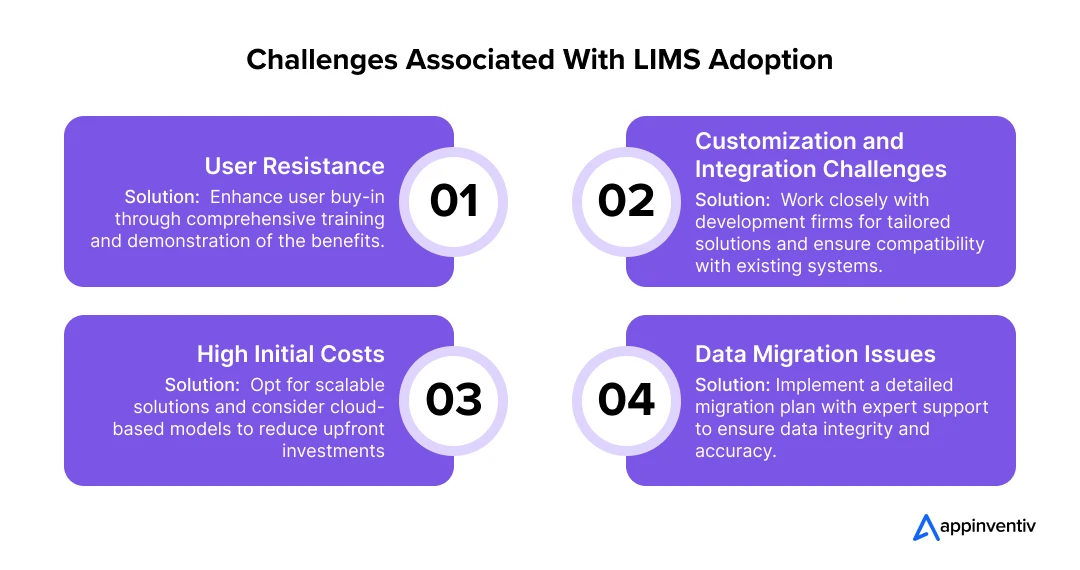
User Resistance
Staff may hesitate to adopt a new system due to unfamiliarity or concerns about increased workload.
Solution: Involve end-users in the selection and implementation process to ensure the LIMS meets their needs. Provide thorough training and ongoing support to ease the transition and highlight the system’s benefits.
Customization and Integration Challenges
Customizing the LIMS to fit specific laboratory workflows and integrating it with existing systems can be challenging.
Solution: Create a LIMS platform with flexible customization options and strong integration capabilities. Collaborate with a leading development firm like Appinventiv to tailor the system to your lab’s specific needs and ensure seamless integration with other software.
High Initial Costs
Implementing LIMS can involve significant expenses for software, infrastructure, and training.
Solution: Consider building scalable, modular LIMS solutions that allow for phased implementation. Cloud-based LIMS can also help reduce upfront hardware and infrastructure costs.
Data Migration Issues
Migrating existing data into a new LIMS can be complex and time-consuming, often requiring data cleaning and formatting.
Solution: Develop a comprehensive data migration strategy that includes data cleaning, validation, and testing. Utilize data migration tools and seek expert assistance to ensure a smooth transition.
After looking at the various challenges businesses can encounter while Healthcare LIMS software development, let us now look into the multiple trends that will redefine the characteristics of LIMS.
Latest Trends in Custom LIMS Software Development for the Healthcare Industry
The Laboratory Information Management System (LIMS) software landscape in the healthcare industry is evolving rapidly, driven by technological advances and increasing demands for efficiency and compliance. Let’s look at the trends in detail below.
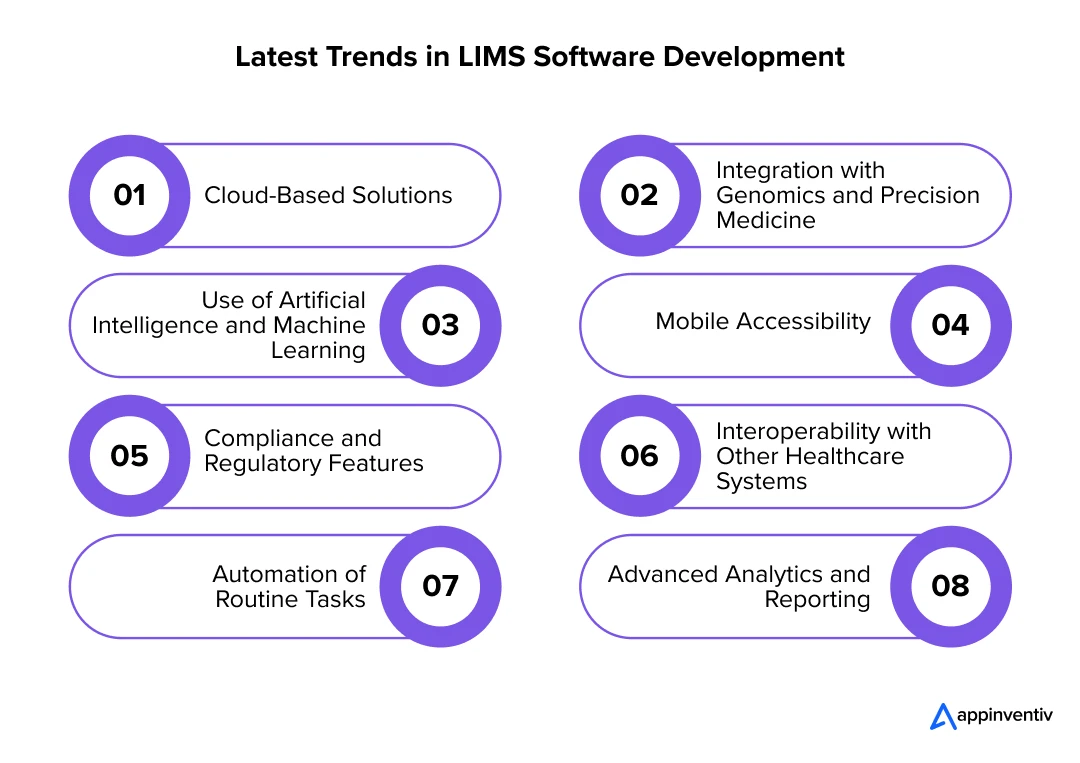
Cloud-Based Solutions
Cloud technology is becoming increasingly popular in LIMS development, offering scalable, flexible, and cost-effective solutions. Cloud-based LIMS allow laboratories to reduce IT overhead costs, enhance data accessibility, and improve disaster recovery capabilities.
Integration with Genomics and Precision Medicine
As personalized medicine advances, LIMS software increasingly integrates genomics data management capabilities. This trend allows labs to handle complex genetic data effectively, supporting targeted treatment plans and research in precision medicine.
Use of Artificial Intelligence and Machine Learning
AI and ML are being integrated into LIMS to automate data analysis, improve decision-making, and predict laboratory needs. These technologies help in pattern recognition, anomaly detection, and optimization of laboratory workflows.
Mobile Accessibility
Mobile-enabled LIMS solutions are on the rise, allowing lab technicians and managers to access data and perform tasks from anywhere. This trend improves the flexibility and responsiveness of healthcare operations.
Compliance and Regulatory Features
Given the strict regulatory environment in healthcare, LIMS software emphasizes tools that assist with compliance management. These include audit trails, electronic signatures, and validation reports that ensure adherence to HIPAA, CLIA, and FDA regulations.
Interoperability with Other Healthcare Systems
LIMS are becoming more interoperable with other healthcare IT systems, such as Electronic Health Records (EHRs) and Practice Management Systems (PMS). This connectivity ensures seamless data flow and integrated patient care management.
Automation of Routine Tasks
Automation remains a key trend, with LIMS increasingly capable of automating standard laboratory processes like sample logging, data entry, and result validation. This reduces manual errors and frees up resources for more critical analytical tasks.
Advanced Analytics and Reporting
Modern LIMS solutions provide advanced analytics and customizable reporting tools, enabling laboratories to gain deeper insights into their operations and outcomes. This supports better strategic planning and quality improvement initiatives.
How Can Appinventiv Help in Building a Robust LIMS for Your Business?
We hope this blog has provided you with a clear understanding of the evolving landscape of Healthcare LIMS software development and its impact on laboratory efficiency and compliance. To develop a LIMS tailored to your specific needs, partnering with Appinventiv is a strategic choice. Here’s why teaming up with our LIMS developers will ensure your project’s success and help your business stay ahead of the curve:
- Expertise in Healthcare Technology: Our deep expertise in healthcare technology allows us to design LIMS solutions that are not only compliant with industry standards but also innovative. We understand the unique challenges and requirements of healthcare IT, enabling us to deliver effective and cutting-edge solutions.
- Our Healthcare Portfolios: Here are some examples of the digital solutions we created for a healthcare business:
- Health-e-People: The Appinventiv team created the Health-e-People app to resolve people’s gaps in tracking their health-related data records. The app combines data from all healthcare devices that an individual uses, connects them to medical caregivers for advice and consultation, and forwards this data to researchers, with the consent of users, to make advancements in the medical field.
- YouCOMM: Appinventiv has also worked on the YouCOMM app, a multi-request application that connects in-hospital patients to nurses for immediate help. The problem faced by the company was the ineffectiveness of the bell-call system. We wanted a solution that would make it convenient for patients to inform the nurses about their needs. Appinventiv tackled the problem by curating a voice-controlled, multi-lingual, and multi-accent solution.
- Customization Capabilities: As a leading healthcare software development company, we believe one size does not fit all regarding LIMS. Our team excels at customizing every aspect of the software to suit your laboratory’s specific operational needs and workflows. This personalized approach undertaken by our LIMS software developers ensures that the system we develop enhances your lab’s efficiency and accuracy.
- Robust Security Protocols: We prioritize the security of your data with state-of-the-art security measures. Implementing advanced encryption, multi-factor authentication, and stringent access controls are all part of protecting sensitive patient and research data against potential cyber threats.
Contact us to build a LIMS solution for your healthcare business now!
FAQs
Q. Why should your business rely on LIMS?
A. It is crucial to have an automated laboratory workflow to perform your analytical work efficiently and quickly while maintaining a high level of quality. LIMS completely adjusts to your unique needs and specifications as opposed to other software. It can be designed to suit the processes that operate in your lab, hence being completely customizable. Introducing a LIMS in your lab will only make your work easier and more reliable.
Q. How long does it take to implement an LIMS solution?
A. The breadth and complexity of the solution, the number and location of the labs/teams involved, and how quickly the customer can move are the primary factors influencing how long it takes to construct a custom healthcare LIMS software development solution. However, a LIMS may be built in weeks instead of the typical few months when using a highly experienced team with a proper development and deployment strategy.
Q. Can I integrate LIMS with other systems?
A. Yes! You can integrate your LIMS software with lab equipment and other applications to make the transfer of data between them easier. It will help you coordinate different elements of the report-making process and bring them all together to make the final reports.


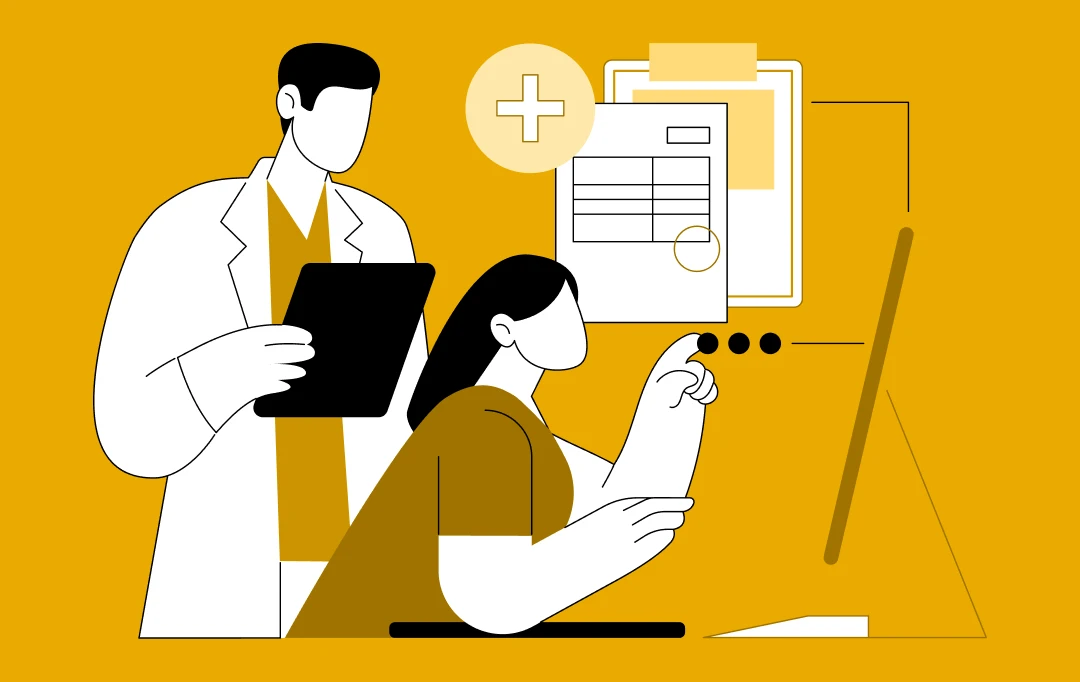
Healthcare IT Outsourcing: Key Benefits, Best Practices, and Implementation Process
Key Takeaways Reduce Costs by 30-40%: Convert capital IT expenses to predictable operational costs, eliminating the need for large in-house teams and infrastructure. Focus on Core Patient Care: Free up internal resources from IT management to concentrate on core healthcare services, innovation, and growth. Ensure Compliance & Mitigate Risk: Leverage expert partners to navigate HIPAA…
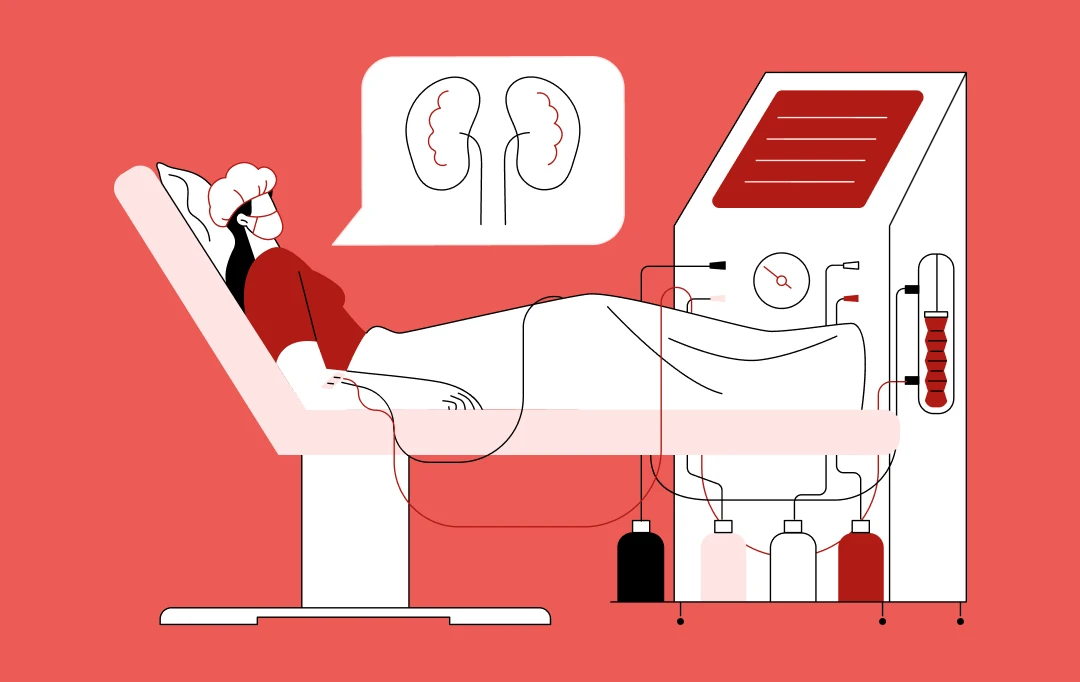
How AI-Powered Virtual Health Assistants Are Enhancing Remote Patient Monitoring
Key takeaways: Remote patient monitoring has the potential to reduce hospital readmissions by up to a quarter, shifting healthcare from reactive to proactive care through continuous, real-time health tracking. The U.S. health intelligent virtual assistant market is expected to reach $1.87 billion by 2030, driven by the growing demand for continuous care, virtual consultations, and…

Why Telehealth Security is Non-Negotiable for Patient Trust and How to Achieve It
Key takeaways: Telehealth security is crucial for patient trust and the continued adoption of digital healthcare services. The rising tide of cyber threats, from ransomware to inadequate authentication, poses significant risks to patient data and provider reputation. Implementing robust security measures like end-to-end encryption, multi-factor authentication, and regular audits is non-negotiable. Compliance with regulations like…







